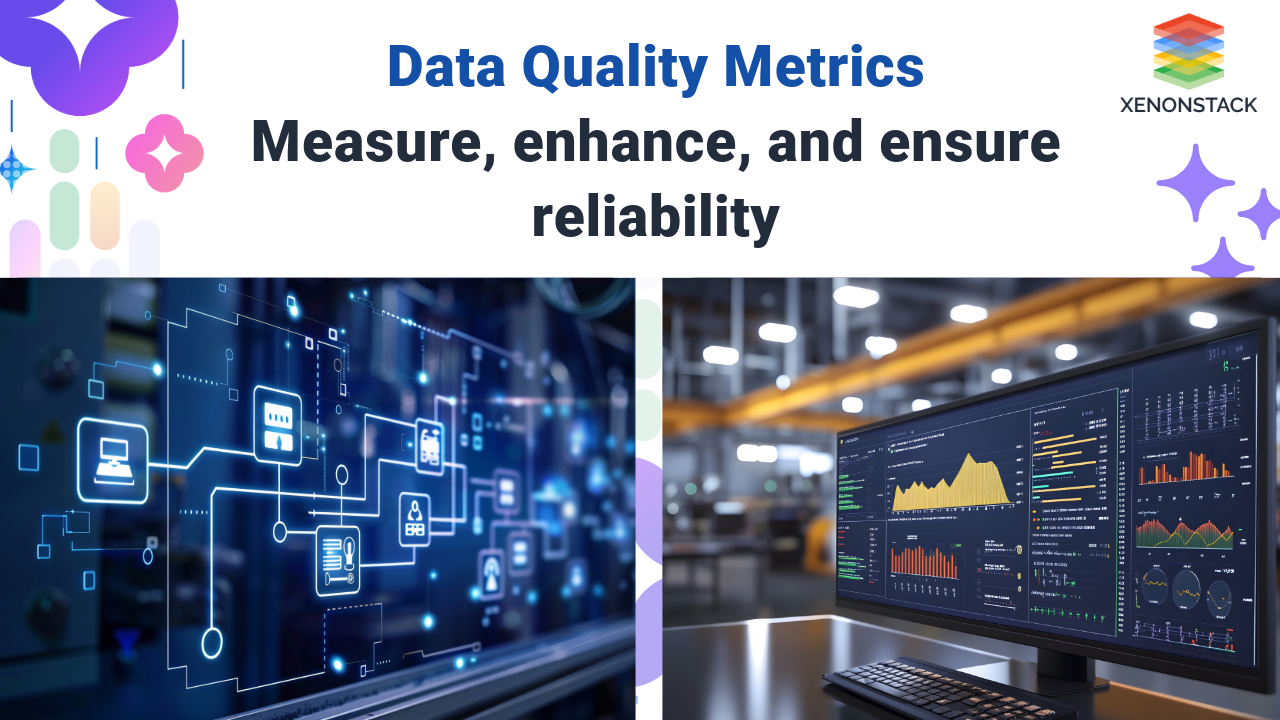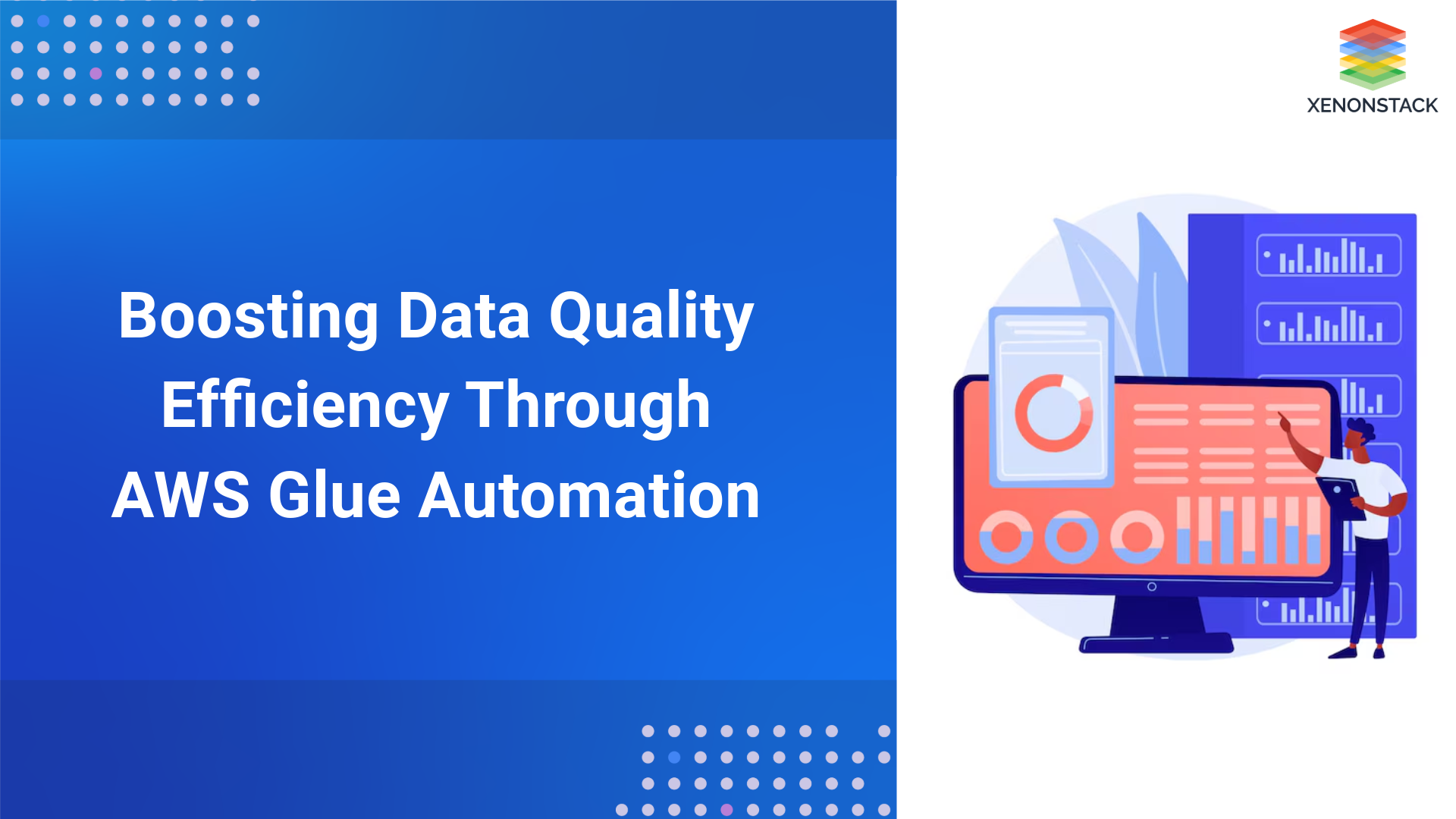
Data quality is no longer something that makes a company competitive; it becomes the only means whereby organizations will extract some meaningful insights to help make strategic decisions. Poor strategies with wrong or deficient information result in inefficiency in operations and huge revenue losses. Thus, in an organization it is quite important to know how to measure and improve the quality of data. The purpose is to revisit some of the most important metrics that link measurement and reporting of data quality with strategies for effective continuous improvement.
Key Metrics for Measuring Data Quality
The organizations can highly measure data quality by adopting several relevant metrics that come across various aspects of data integrity, some of which have been enlisted below:
1. Accuracy
It represents the proximity of the actual and prescribed values. It makes a premise for proper analysis and sound decision-making. Small miscalculations can lead to a huge error, especially when the domain is sensitive in nature, such as financial reporting.
Business firms can make use of measurement techniques that include cross-verifying data with actual sources, performing continuous audits, and using statistical sampling, due to which the firm determines the validity and accuracy of entries.
2. Completeness
Completeness refers to whether the dataset available has all the information necessary. Incomplete datasets lead to distorted analysis hence leading to bad business choices.
Techniques used in assessing completeness include percentage missing values in important fields, completeness ratio that represents the number of complete records in comparison with the total number of records, and gap analysis-a method applied to identify the key elements of data that may be missing to support proper decisions making.
3. Uniformity
Data values should be uniform in all datasets or systems, to keep them consistent. When inconsistency occurs, it usually results in delivering conflicting information making it unacceptable for use.
Measurements include comparing datasets to find differences, standardized data entry procedures, and reconciliation of data for uniformity and coherence from one system to another. Many organizations set data standards based on consistency, for the sake of having consistency in data entry.
4. Timeliness
Timeliness refers to the fact that data is available at a particular point in time. If timeliness is low, operations can degrade quickly, deteriorating the effectiveness of decision-making activities.
Techniques for measuring timeliness include tracking the number of refresh cycles it takes to make an update and assigning explicit cycles based on an enterprise's business requirements. For example, faster-moving companies would require a greater refresh rate to update and refresh the data.
5. Validity
Bad data produces wrong inferences that leads to bad business decisions. Techniques for measuring validity include validation rules used at the data capture stage, which include validation on the formats and ranges, routine checking of datasets for compliance with the prescribed standards, and utilization of profiling tools in respect of data, which will automatically check for compliance in relation to business rules.
6. Uniqueness and Duplication
Duplicate records in a dataset have two meanings, one where all records should be unique e.g. the content of each record is dissimilar, and two, multiple occurrences of a single record. Either way, duplicates can badly affect many analyses and therefore make results drawn from potentially false data.
Among measures for uniqueness and duplication, there are algorithms that rate every record on main identifiers, like social security numbers or customer IDs, through deduplication processes by way of removal or flagging for removal of duplicate records and keeping automatic data cleaning processes. Uniqueness brings accuracy to reportage and decision-making.
Data Quality Lifecycle
Data Quality Life Cycle is also a procedure we have to follow, it is a series of steps between initiation and closure in Data quality projects. This cycle is key to maintaining higher data quality standards at many companies, especially those using data lakes. In Data Quality Lifecycle, there are some of the following main phases:
1. Data Discovery
This initial phase involves requirement gathering, identifying source applications, collecting and organizing data, and classifying data quality reports. It helps in laying down the basis of what type of data is available and the quality of the data.
2. Data Profiling
This phase involves initial data discovery and a light sweep of the data quality in terms of rule suggestions. Approval of the final data quality rules from data profiling is required to ensure all evaluation metrics must be relevant and robust.
3. Data Rules
This step runs the finalized business rules to check the correctness and validity of data. This is simply about making sure your data meets certain quality thresholds before you operationalize and institutionalize its usage in decision-making in an organization.
4. Distribution of Data and Remediation
Once data quality assurance is complete, reports are published for review by the responsible party who will initiate cleanup efforts. The step makes sure everything that was identified was fixed in time, even if the data somehow made it into the view or API.
5. Data Monitoring
In data monitoring phase, the remediation process is continuously monitored. Dashboards and Scorecards can be defined by organizations for data quality metrics and provide a measurement of its ongoing assessment and improvement phases.
This web of processes helps organizations protect the quality of their data as they integrate it and use it in different applications and analyses.
Measurement and Reporting Techniques for Quality
Measurement of quality data refers to systematic measurement methods, which help an organization track the health of data and make such efforts efficiently.
Data Profiling
Profiling data describes the analysis of characteristics of the datasets. This will most probably raise a red flag on some quality issues at an early stage.
Profiling tools such as Talend or Informatica can automate data analysis and generate rich reports that highlight major findings in terms of patterns, distributions, and outliers, ensuring data quality.
Automated Tool Monitoring
Continuous scanning of the data against the set quality rules by automated tools further prepares for real-time monitoring, allowing organizations to pinpoint problems easily and not continue to perpetuate errors within their systems.
With the utilization of tool monitoring software in association with an existing database, there will be better control over the quality of data, and alerts can also be raised on the breach of thresholds. Automation saves not only time but also manpower, which can be used on more critical strategies than just relying on manual data checks.
Dashboards and Reporting
The dashboards will provide key statistics that the stakeholders can use to understand some of the critical metrics and trend definitions.
Business intelligence tools, such as Tableau or Power BI, are used to create interactive dashboards with real-time data quality. The dashboards promote efficient team discussion and can time interventions and strategy-making over the latest available data.
Surveys and Feedback
Surveys and feedback will be very qualitative about usability and effectiveness for users. Targeted surveys, especially those that are designed for specific user groups- enable organizations to capture experiences and find out where pain points exist outside delineations of quantitative metrics. Analysis of such feedback will let common themes or areas needed for improvement in driving user-centered enhancement on data quality processes.
How to Use Metrics to Drive Improvement
Organizations can identify the critical metrics and measurement methods that can subsequently sustain an ongoing process of quality improvement.
Identify areas of Improvement
Regular review of metrics will be important to identify areas with poor data quality. Some identified problems, such as high error rates or mismatches of data will then go through root cause analysis enabling the organization to ponder improvement initiatives to assess their probable impact on business results. It can be seen as a structured approach towards focusing efforts on the most critical areas.
Identify targets and KPIs
Clear targets and KPIs provide accountability to the teams and produce measurable output. Target setting for each metric in terms of KPI, say for a target rate of accuracy of more than 95%, and explaining such plans transparently across all departments concerned to share ownership on the quality of the data, is considered important.
The process of targets can also be evaluated and updated frequently enough to keep the system going through continuous improvement.
Establish Data Governance practices
Proper governance frameworks should be well defined to maintain proper adherence in standardized processes for data management. Good governance benefits the initiatives of data quality by providing cross-functional teams that oversee such tasks, clear policies that outline roles and responsibilities as well as procedures. A defined governance structure is also a method of allowing better collaboration among departments, applying the practices for data management in one manner.
Capacity Building Training and Education
Were the employees educated on proper handling of the data, best practices, and keeping high quality?
Quality information will be the outcome if organizations train the workforce with the best practices on handling the data for quality to be kept. Data entry validation workshops combined with enlightening the staff on proper techniques for entry and validation methods instill good data quality importance, bringing accountability in all forms throughout the culture as a whole.
Such access and reference to the resources by the staff ensure that good-quality data standards are upheld in routine operations.
Learn through iteration
Organisations need to be open to changed strategies that result from learnings gained through the metrics over time. This may include setting up recurring review cycles. For instance, a quarterly review can be set up so that teams can take a step back to assess their progress against set targets and thus support the establishment of continually improving cultures.
Open communication about a person's achievements, both in success stories and challenges, can lead to actionable changes in procedure or practice that can drive data quality enhancements.
Conclusion of Data Quality Metrics
Measuring and continually improving the quality of data is not a one-time process but an ongoing process requiring commitment at all levels of an organization. Basic metrics, effective measurement techniques, and using insights to facilitate continued improvement will powerfully enhance the confidence that the integrity of your data is sound. Improved-quality data also helps make better decisions and drive operational efficiency for organizations enjoying competitive advantages in increasingly complex marketplaces.
Such practices for organizations would entail performing an internal audit on current data quality practices, applying one or more measurement techniques, and building up a solid governance framework that should be continuous and assist in improving data quality management. Any such strategy for organizations will set a good foundation for achieving data of high quality with maximum value from the data asset.
- Explore More Master Data Management in Banking Sector
- Know More Data Quality Management
- Explore Further Data Management with Intelligent Data Agents
- Know Further Master Data Management: Architecture and Best Practices
- Discover More Master Data Management in Supply Chain





